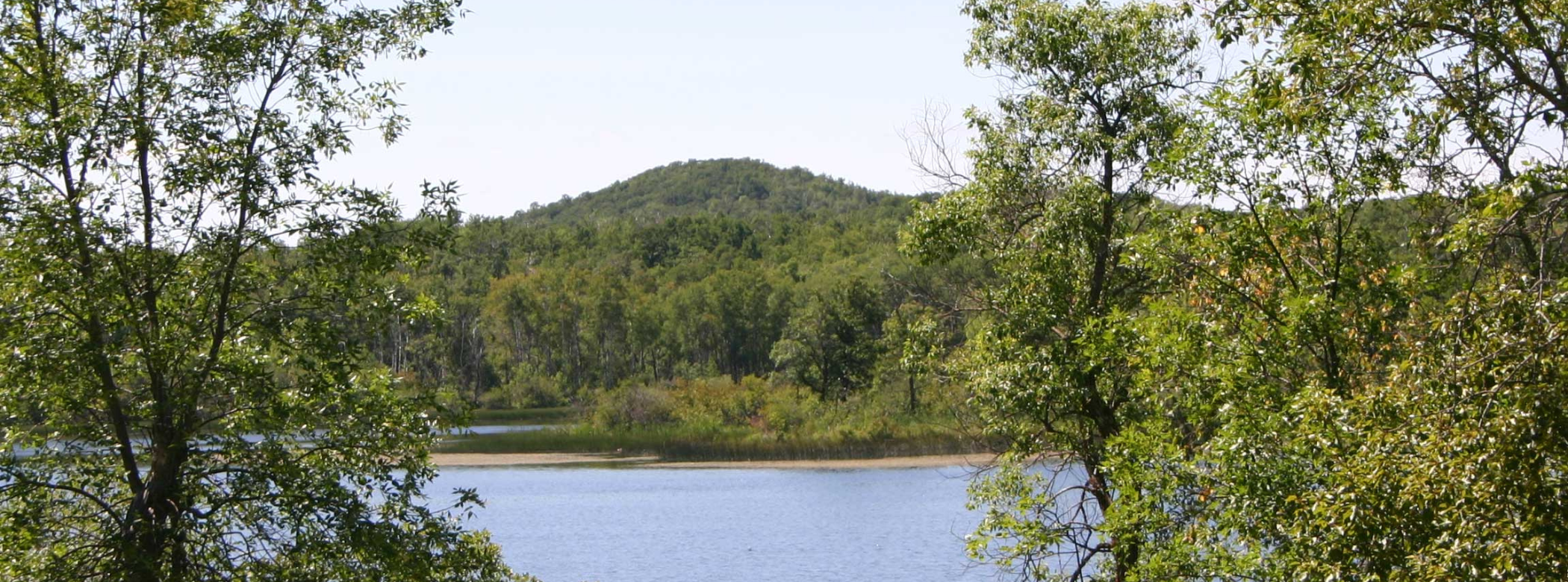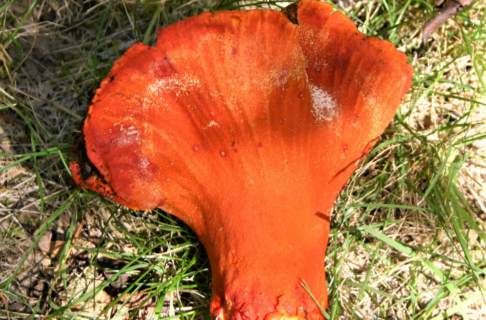Posted on: Tuesday August 14, 2018
Last week I spent some time looking for rare and under-collected plants in the “Turtle Mountains” of Manitoba. First off let me say that I think the term “Manitoba mountain” needs its own definition in the dictionary. To most people the word “mountain” conjures up images of snow-capped peaks and sure-footed Mountain Goats clambering up rocky screes. Climbing a mountain is to risk life itself due to treacherous terrain, exposure to harsh weather and utter physical exhaustion. In contrast, climbing a “Manitoba mountain” is to risk breaking out in a light sweat, if it’s a hot day-a really hot one. Now please don’t get me wrong, I love the Turtle Mountains. I just don’t think they should be called “mountains”. But I suppose perspective is everything and the people who named them were likely so tired of the monotony of the Red River Plain that something that you could see rising up slightly in the distance was good enough to be called a “mountain”.
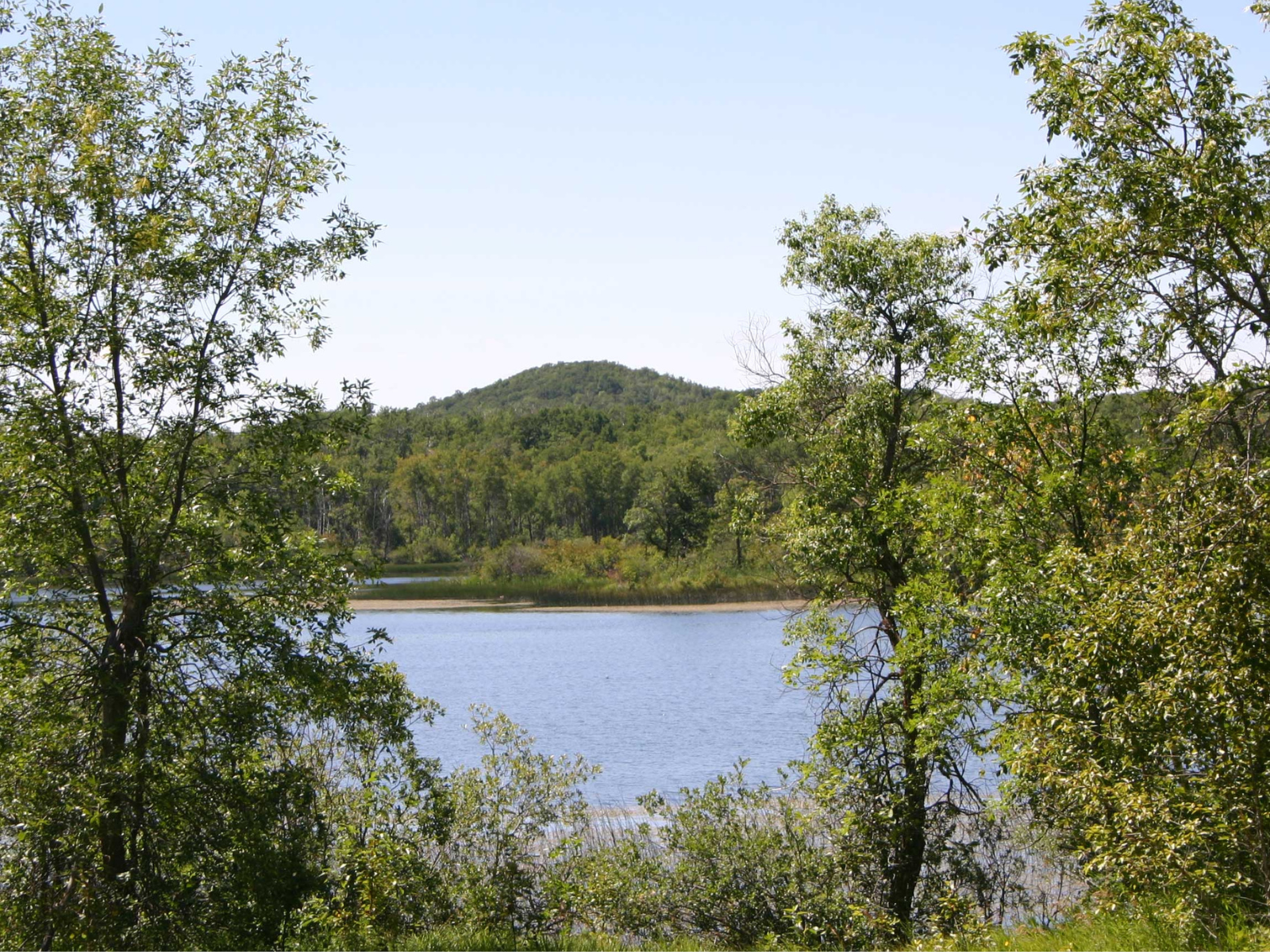
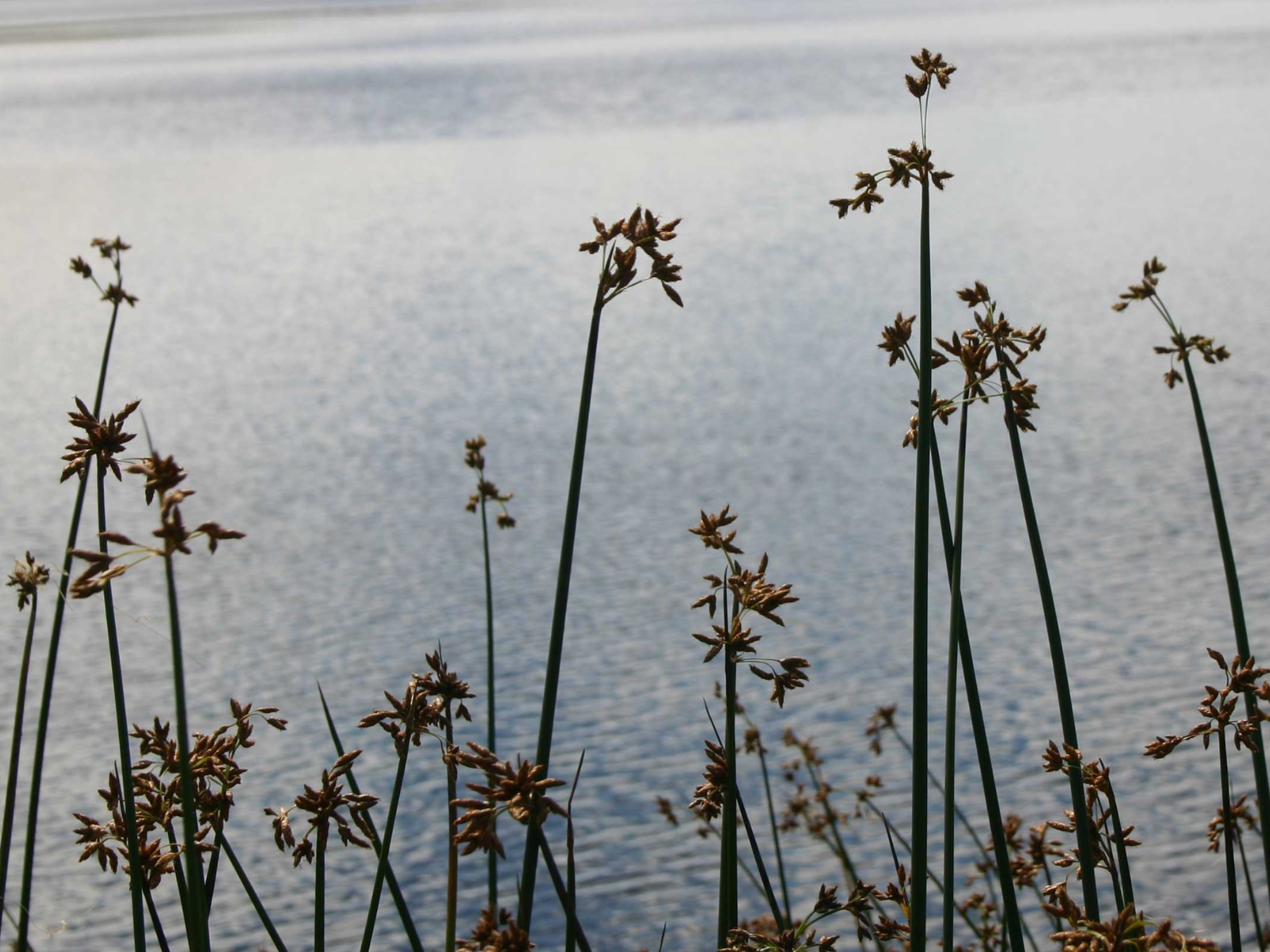
Sedges (Scirpus sp.) growing along the shore of Adam Lake in Turtle Mountain Provincial Park.

Before I reached the “Turtle Mountains” south of Boissevain, I had passed another mountain that isn’t really a mountain: Mount Nebo. Named after Mount Nebo in the Holy Land, it has a similar hump-like shape. Just southwest of Miami, Mount Nebo is part of the Manitoba escarpment, the ancient shore of glacial Lake Aggasiz. I was interested in this feature because there is exposed Cretaceous shale there. Such material is where a rare plant (e.g. Eveningstar or Mentzelia decapetala) that historically occurred in Manitoba likes to grow. Unfortunately, I was not able to find this species here, nor at one of the sites where it was collected decades ago near Boissevain. Sadly, it is likely extirpated in the province (i.e. not found here but present elsewhere in Canada).
Image: Shale outcrops with unusual plants occur at Mount Nebo, near Miami, Manitoba.
In Turtle Mountain Provincial Park, I hiked several trails searching for rare sedges. I was also interested in seeing if the brome (Bromus) and wild rye (Elymus) grasses that I was searching for in the Otterburne area in June might occur here instead. Jackpot! I discovered that the brome and wild rye grasses I was looking for are present in the park, likely because human disturbances that favour non-native grasses are minimal here. I may have found some of the rare sedges, although I won’t know for sure until my plants are completely processed here at the Museum as they have to be thoroughly dried, and then frozen for pest control purposes before I can look at them closely.
While I was in the area, I decided to search for rare plants along the Turtle’s Back trail in William Lake Provincial Park, a small park adjacent to Turtle Mountain Provincial Park. At the summit (84 m above nearby William Lake), I discovered that this area was visited by Indigenous peoples for thousands of years as it is the highest point of land for many kilometers, providing an excellent view of the area around it. It was humbling to know that in climbing this peak, I was following in the footsteps of First Nations from long ago, and those who still visit here today.
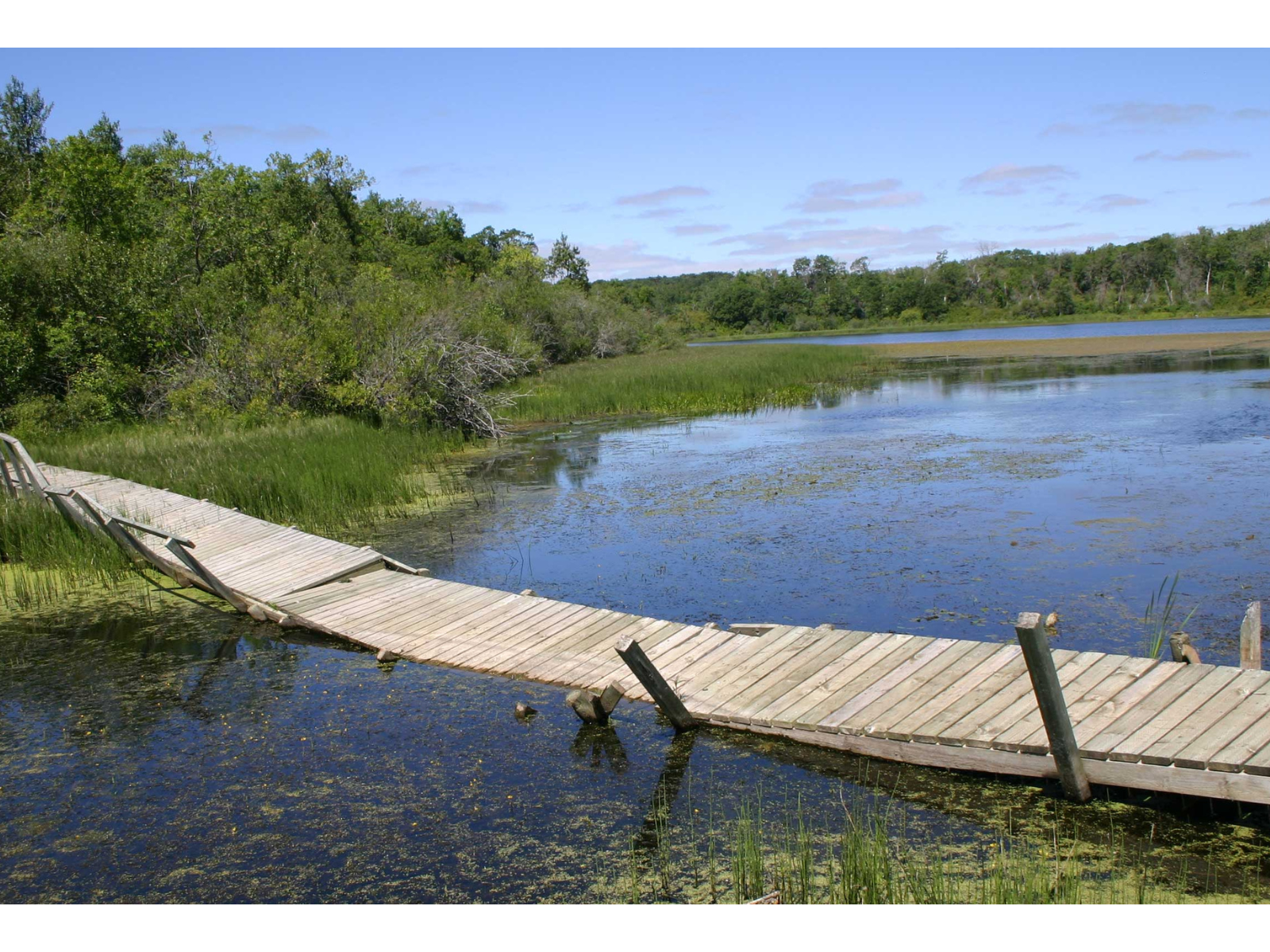
Boardwalks over wetlands enable easy collection of aquatic plants. Fortunately I didn’t have to use this boardwalk as a new one had been built right next to it.
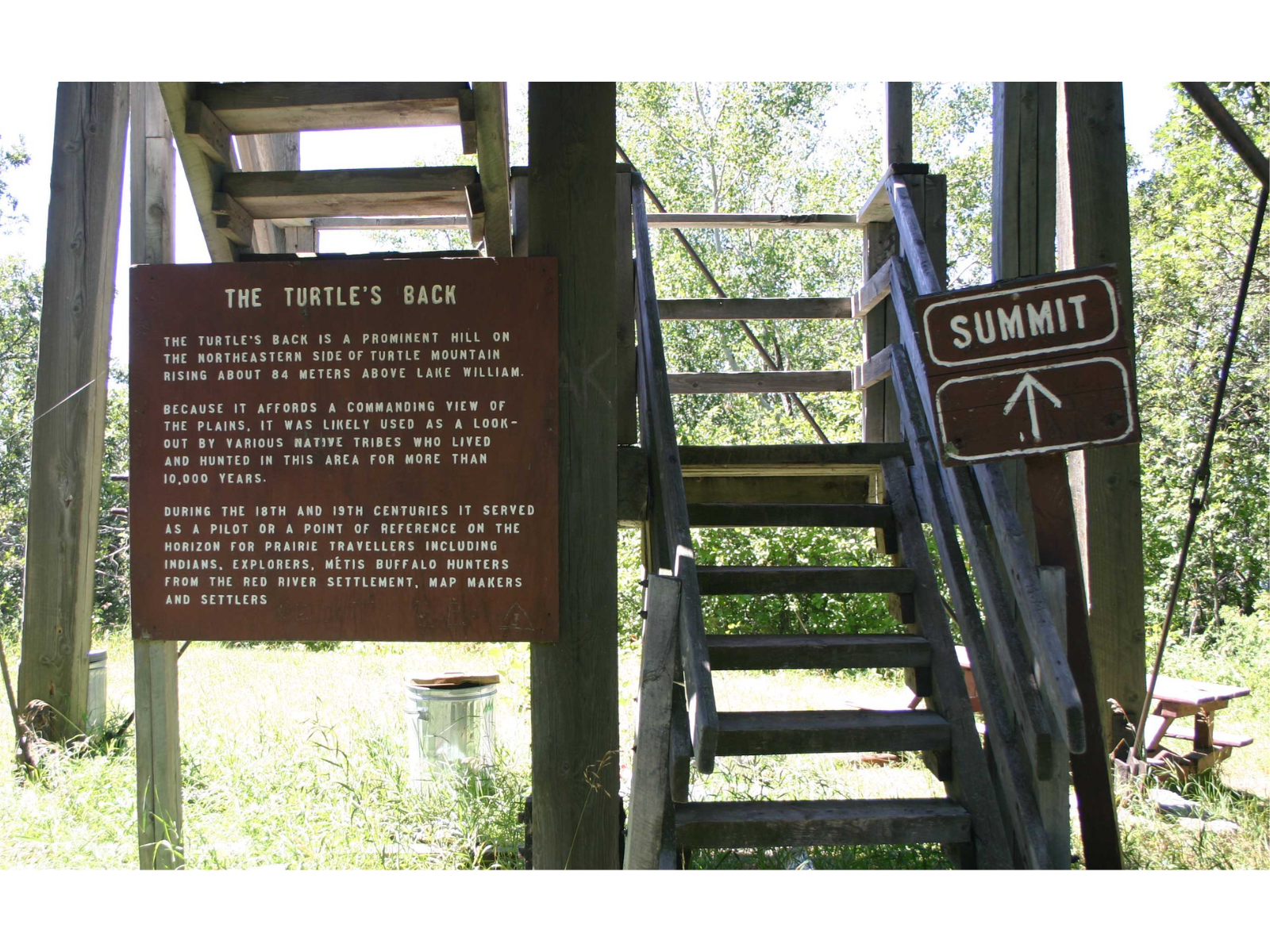
The sign at the base of the lookout tower at the Turtle’s Back peak in William Lake Provincial Park.
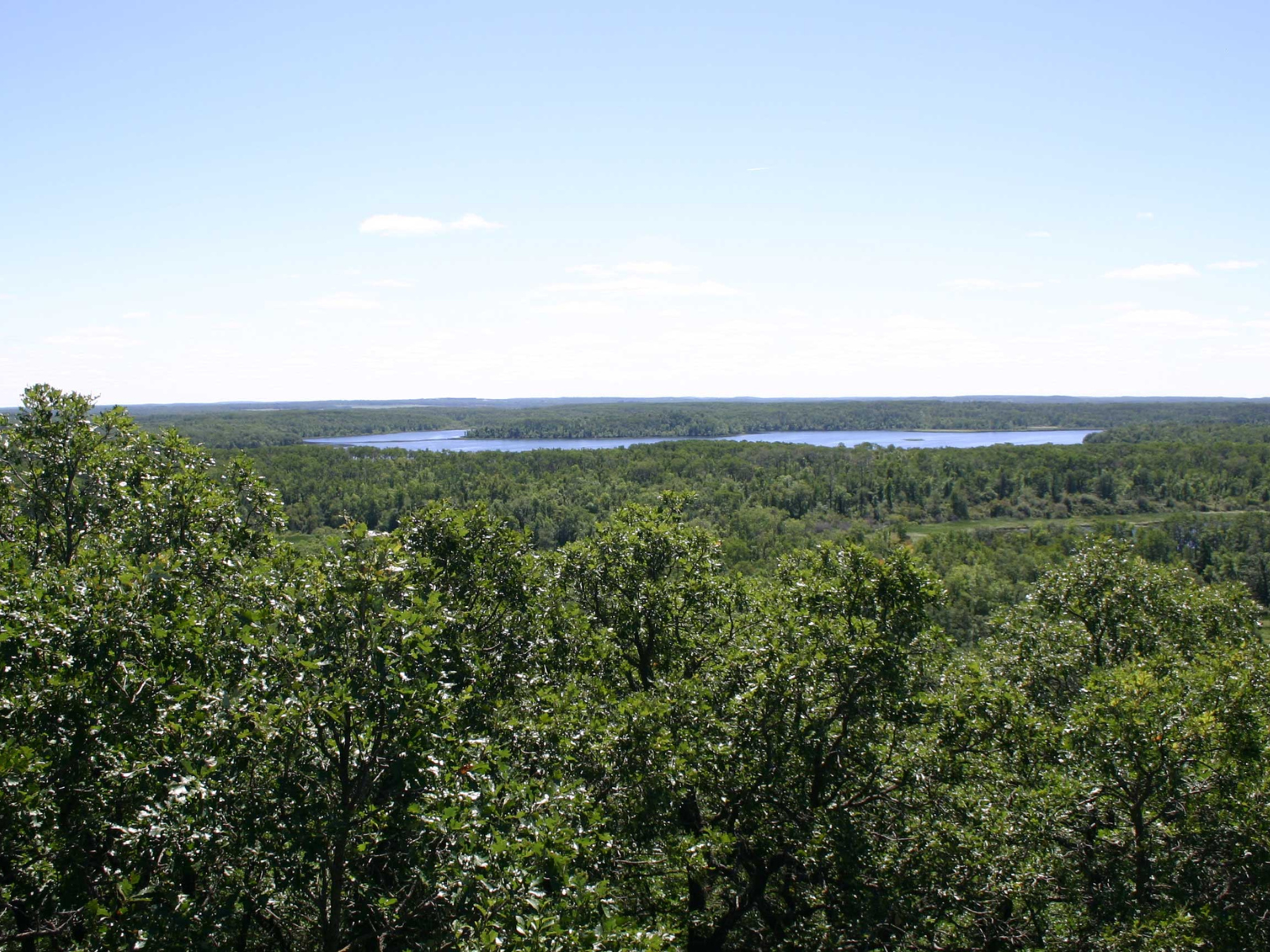
View from the top of the tower on Turtle’s Back summit, in William Lake Provincial Park.




